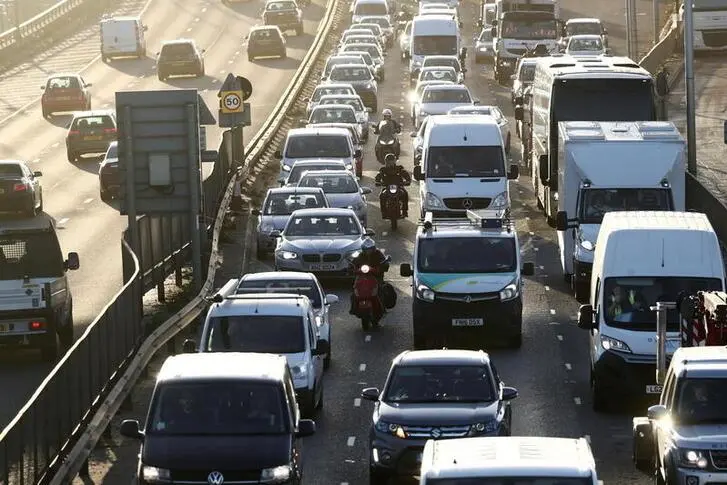PHOTO
LONDON/NEW YORK/SINGAPORE- European and U.S. gasoline stocks have fallen to near pre-pandemic levels as Western holidaymakers hit the roads, but the end of the driving season and the spread of the Delta variant of the coronavirus could slow the recovery in global oil demand.
The pandemic and resulting lockdowns around the world destroyed demand for oil products and led to massive stock builds in 2020 which have been gradually depleting this year.
The International Energy Agency said on Thursday that global oil demand surged by 3.8 million barrels per day month-on-month in June, led by increased mobility in North America and Europe, but reversed course in July and is set to proceed more slowly for the rest of the year due to the spread of the Delta variant.
"International travels are restricted so everyone is travelling by car. It is really a car-driven recovery that is pulling road fuel inventories down," said Cuneyt Kazokoglu, head of oil demand analysis at FGE.
World gasoline demand in June was only 3% lower than the 2019 average, according to FGE's estimate, and demand in the United States, Europe and China has either largely recovered or exceeded 2019 levels.
"Government regulations and restrictions are the main obstacles for demand recovery at the moment. Whenever they are lifted, we see pent-up demand and a strong recovery," said Kazokoglu.
Successful vaccination programmes in North America and Europe - with around half their populations fully inoculated according to Our World in Data project - meant easing restrictions and faster and steeper fuel stock drawdowns West-of-Suez than in the East.
Fuel stocks in Asia, where only around 30% of people are fully vaccinated, remain elevated overall as a rapid rise in COVID-19 case numbers in parts of the continent leads to new curbs on movement.
"It will be interesting to see what will happen in the next couple of months with fuel demand and the number of Delta cases," said Insights Global's Lars van Wageningen. "The situation is still unstable in several countries and we cannot say all are fully recovered."
PENT-UP DEMAND
The United States consumes about a fifth of the world's oil, almost half of it as gasoline and it is here that the inventory decline has been largest.
U.S. gasoline inventories fell to 227.5 million barrels last week, according to data from the U.S. Energy Information Administration, the lowest since November 2020 and compared to 233.8 million barrels in the same week of 2019, before the pandemic.
Rising employment and mobility drove consumption to an average 8.6 million barrels per day (bpd) in the first half of the year, the EIA said, but it cautioned that it expects demand through 2022 to stay below 2019's average level of 9.3 million bpd as large numbers continue working from home.
Ernie Barsamian, chief executive officer of The Tank Tiger, a U.S. clearing house that connects suppliers to available storage, said they had received fewer requests for gasoline and diesel storage.
He blamed a backwardation market structure in which prices for immediate delivery are higher than those for future dispatch, signalling tight conditions and discouraging storage.
Gasoline in Europe's main Amsterdam-Rotterdam-Antwerp (ARA) storage hub fell for a fifth consecutive week last week, mainly due to strong exports to the United States and Africa, while weekly averages of light distillates at Fujairah, the main Middle-East hub, have been well below pre-pandemic levels in recent weeks.
CRUDE STOCKS
The United States also led the draw in crude stocks in July, according to FGE.
Stockpiles at Cushing, Oklahoma, the delivery point for benchmark U.S. crude futures, have fallen for nine straight weeks to the lowest since November 2018, government data shows.
Scott Shelton, a U.S.-based energy specialist at United ICAP, noted July draws were larger than expected as refineries boosted output.
But the rise in COVID-19 cases in Asia coupled with refinery maintenance season, has slashed crude shipments to the world's biggest importer China, according to analytics platform Vortexa.
"The outbreak of Delta...in China is further posing a threat to the country's domestic demand, and in turn refinery runs," said Serena Huang, Vortexa's Asia lead analyst.
The highly infectious Delta variant has been detected in more than a dozen Chinese cities since late July, and local governments have been ordered to close loopholes in control efforts.
However, traders spy a ray of hope from India where fuel demand skyrocketed as the latest wave of infections ebbed.
"Fuel demand in India has recovered quickly now that infections have abated and restrictions have been lifted... This is also likely to be the case elsewhere, so we view the current demand concerns as exaggerated," said Commerzbank analyst Carsten Fritsch.
Bozorgmehr Sharafedin, Stephanie Kelly and Roslan Khasawneh
(Reporting by Bozorgmehr Sharafedin in London, Stephanie Kelly and Devika Krishna Kumar in New York, Roslan Khasawneh in Singapore; Editing by Kirsten Donovan) ((bozorgmehr.sharafedin@thomsonreuters.com; Twitter: @bozorgmehr;))












